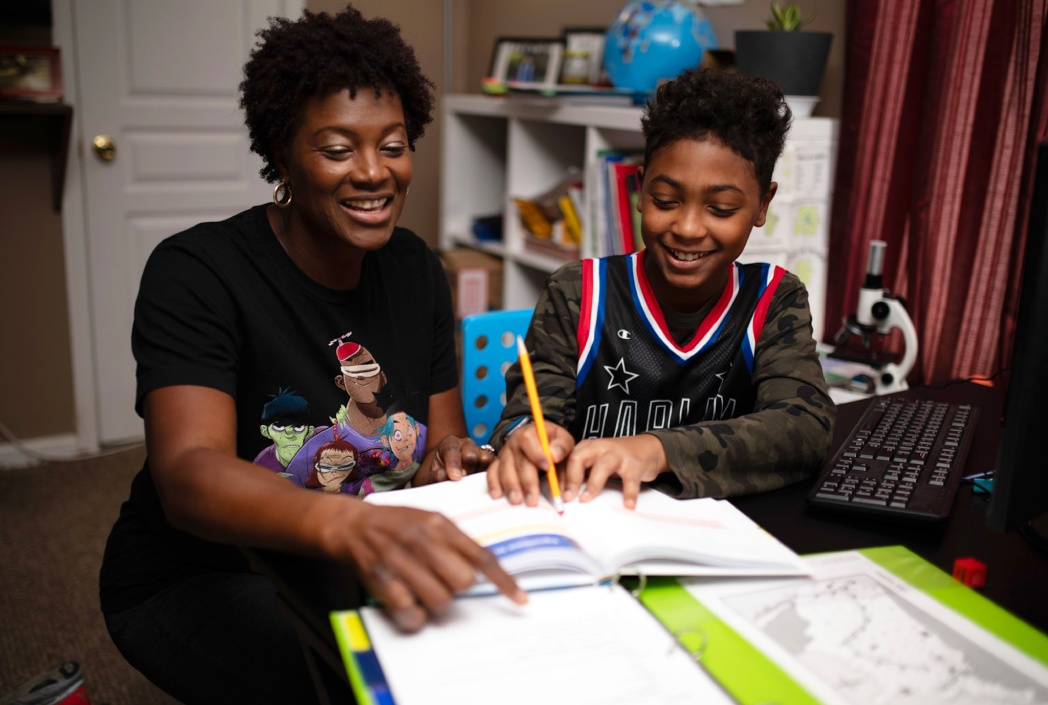How K12 Balances Flexible Online Learning and Structure
Learn how K12 combines flexible online learning with structured support. Access personalized learning, live support, and progress tracking.

At K12, we understand how personalized, flexible online learning can make a real difference, whether students are just starting out or preparing to graduate. More than twenty-five years ago, we realized that learning should fit into life, not the other way around. That’s exactly what K12 was built to do.
The key is finding the right balance between flexibility and structure. Too much structure is limiting, but too little can make it hard to stay focused. That’s why K12 is committed to giving students the freedom to learn in ways that work for them while providing certified teacher instruction and support, an engaging curriculum, and a setup that keeps them on track without feeling boxed in.
Why Flexibility Matters in Online Education
Flexibility in online learning means students have control over how, when, and at what pace they learn. Every student is different. Some might need extra time to grasp a subject fully, while others are ready to move ahead to more complex topics. Additionally, some focus best early in the morning, while others do their best work later in the day. For families juggling busy schedules, the ability to shape the school day around their lives can make a big difference.
Here’s why flexible online education is so important:
- Freedom to learn more at your own pace: Traditional classrooms move at a set speed, but online learning lets students take the time they need to fully understand a subject or accelerate when they’re ready. This approach reduces learning gaps and fosters a deeper understanding of the material.
- Personalized learning paths tailored to each student’s needs: No two students are the same, so why should their education be? Online learning adapts to individual strengths, challenges, and interests, providing customized lesson plans. Learn more about our personalized online learning programs for every grade level.
- Flexibility for families with unique schedules: For families balancing work, travel, extracurriculars, or other responsibilities, a rigid school schedule can be limiting. Online learning makes it easier to structure the day in a way that fits without compromising academic progress.
- Support for diverse learning styles: Flexible online education makes it easier to incorporate different teaching methods, whether students learn best by reading, through hands-on activities, or with visual or auditory reinforcement.
- Increased engagement and motivation: When students have more control over their learning, they’re more likely to stay motivated and engaged.
The Role of Structure in Academic Success
While flexibility gives students freedom, structure keeps them on track. In online learning, structure means having a clear plan, routines, and expectations that guide without restriction. It is the framework that helps students stay focused, build good study habits, and make steady progress toward their goals.
Here are some reasons why structure is just as important as flexibility in online learning:
- Establishes consistency and routine: A consistent routine helps students develop strong study habits and a sense of responsibility.
- Provides a clear roadmap: A well-organized learning plan outlines daily tasks, helping students navigate their coursework confidently and avoid feeling overwhelmed.
- Sets clear expectations: Knowing what is expected, such as deadlines, participation, or lesson completion, helps students manage their time effectively.
- Helps students stay on track and avoid procrastination: Having some structure breaks learning into manageable steps, ensuring continuous progress.
K12’s Winning Formula: Balancing Flexibility and Structure for Student Success
K12 blends the freedom of flexible online learning with the guidance of structured support, empowering students to take charge of their education while ensuring they have the tools and resources they need to succeed.
Here’s how we make it happen:
- Teacher-Led Virtual Classrooms and Live Lessons: Live, interactive sessions combine real-time engagement with the flexibility of online learning, ensuring students stay connected and accountable.
- Structured Assessments: Integrated quizzes, tests, and assignments at key points help track progress and address learning gaps without overwhelming students.
- Progress Tracking: Detailed tracking tools allow learners and families to monitor achievements, upcoming tasks, and overall performance, supporting flexibility and focus.
- Time Management Tools: Digital planners, assignment trackers, and scheduling features empower students to take ownership of their time while maintaining structure.
- Regular Communication: Consistent check-ins and progress updates foster strong communication between students, teachers, and families, ensuring no student feels alone in their learning journey.
- Variety of Learning Formats: K12’s curriculum incorporates diverse teaching methods, such as videos, interactive activities, and hands-on projects, to cater to different learning styles.
7 Tips for Families to Maximize Flexible yet Structured Learning
Online learning gives families the freedom to shape education in a way that works best for them—but that doesn’t mean figuring it out alone. Whether it’s setting up a good routine or tapping into K12’s built-in support, here’s how to make online learning as smooth and effective as possible:
- Create a dedicated learning space at home: A quiet, organized spot helps students shift into learning mode. A consistent space signals “school time” and enhances focus.
- Establish routines that work for your family: Align study times with your child’s natural rhythms, whether early mornings or late afternoons, to form effective study habits.
- Use K12’s resources and support system: Leverage live teacher sessions, progress trackers, tutoring, and virtual clubs for guidance and enrichment.
- Encourage open communication: Regular check-ins about progress, challenges, or upcoming lessons help students stay on track.
- Incorporate diverse learning methods: Vary learning activities to keep students engaged using K12’s different formats, like videos, interactive lessons, and hands-on projects. We have skill-building learning games too.
- Set clear expectations: Define daily goals and deadlines to help students build responsibility and manage time effectively.
- Tailor learning experiences to individual needs and interests: Personalized lessons and activities boost engagement and motivation.
Explore K12’s Flexible and Structured Programs Today
Some students thrive with a set routine, while others need room to explore at their own pace. With K12, families can find the right balance between flexibility and structure that keeps children engaged, confident, and excited to learn.
Ready to see how K12 can work for your family? Find an accredited online school, connect with an enrollment advisor, and start building a learning experience that fits your child’s future today.
What's Your Reaction?



























